le pere lachaise : Stroll in a memorial garden
- Caroline
- 25 juin 2018
- 6 min de lecture

Of the twenty cemeteries in Paris, le Père-Lachaise is the most famous with more than three million visitors a year from all over the world.
Beyond its primary function, this famous romantic-inspired necropolis designed by Brongniart, has become an open-air museum and a pantheon garden .
Opened in 1804 on the site of a former Jesuit retreat, le Père-Lachaise is today one of the world's most celebrated of cemeteries.
More than 3 millions and a half people come to le Père-Lachaise each year, to walk in its nearly 44 Ha (109 acres) consisting of 70000 burial plots and funerary monuments.
Many of which are dedicated to some of the world's greatest names in the arts, sciences, literature and of course history but the great majority is unknown people.
(Guillaume Appolinaire, Marcel Proust, Gustave Caillebotte, Honoré de Balzac, Eugène Delacroix, Jim Morrison)
What makes this cemetery such a popular site? Certainly the world renown of some people buried there, but not only.
Le Père-Lachaise is an absolute open-air museum, and the visit can be read as an history book through the graves of famous people, as well as powerful family graves or poignant memorials of anonymous killed in historical events.
Moreover this is an opportunity to make a visit in the most beautiful surround for funeral art from the 19th century to our days.
HISTORY OF THE PERE LACHAISE
This famous Parisian cemetery was named for Père François de La Chaise (1624 - 1709), the spiritual adviser of Louis XIV who lived in the Jesuit house rebuilt in 1682 on the site of the chapel.

Established by Napoleon Bonaparte who lifted the ban of such burial grounds, which had been deemed a health hazard, the cemetery was laid out by Alexandre-Théodore Brongniart in less than six months.
Le Père-Lachaise cemetery opened on May,21 1804.

The first person buried there was a five-year-old girl named Adélaïde Paillard de Villeneuve, the daughter of a door bellboy of the Faubourg St. Antoine. Her grave no longer exists as the plot was only purchased as a temporary concession.

Many believed this cemetery to be too far beyond the downtown city limits for convenience and it took a while before the site became popular with the general public.
In 1804, le Père-Lachaise had contained only 13 graves.
To attract individuals to purchase plots in the cemetery, the administrators devised a strategy to make it widely known. They organized the transfer of the remains of national treasures Jean de La Fontaine and Molière making it the hip place to be buried.
Records note that the cemetery's population increased quickly after that because everyone wanted to be buried among the famous.
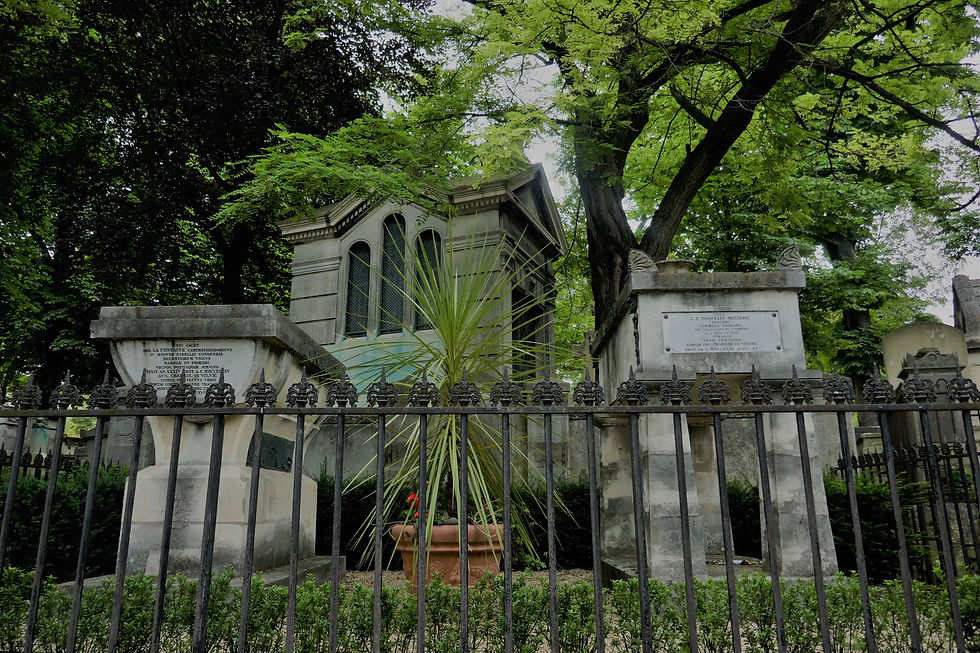
The following year there were 44 burials, 49 in 1806, 62 in 1807 and 833 in 1812.
In 1817, the remains of Pierre Abélard and Héloïse d'Argenteuil were also transferred to the cemetery with their monument's canopy made from fragments of the abbey of Nogent-sur-Seine.

This strategy achieved its objective as le Père-Lachaise went from containing a few dozen permanent residents to more than 33000 in 1830 !
The 44 Ha (109 acres) cemetery is also rich with sculptures, as each family of the deceased buried here tried to out-do the sculptures and monuments placed by other wealthy families. The result is many spectacular works of art that are equally as interesting to view as the various gravesites of famous individuals.
The funerary art really starts to develop in the beginning of the 19th century , at le Père-Lachaise in particular.
The graves are past interpretations, miniaturization of the Ancient.
Creations used to be uncommon, with new materials never used before.

There is a large range of funerary art styles : Antique, Egyptian, Neo classical, Gothic, Renaissance, Art Nouveau, Haussmanian, exoticism, eclecticism…
This funerary art mixes ornaments as steles, slabs, catafalques, medallions, bust, bas relief angels, torches.....
Stroll through the charming cobbled alleys and discover elegant family chapel tombs, sculptures of varying artistic styles, poignant or odd epitaphs.
"Adieu Mère - Good bye Mother ", the last tribute to a mother, intimate, touching and grateful.

PERE LACHAISE AS A GARDEN OF STONES

As a garden of stones, we can find incredible sculptures.
A soothing harmony where art and nature come together.

The melancholia must not discourage the walkers.

It is the largest park in Paris with 15 km of alleys and avenues.
Those fields of rest offer around their cobbled lanes, a sanctuary for birds, insects and plants.

You will find 4000 trees representing more than 50 different varieties : maples, acacias, cherry trees, willows, horse chestnuts… and more than 6000 bushes.

To enlarge the capacity of the cemetery a neo byzantine style columbarium and a crematorium have been built end of the 19th century by the architect Formigé.

The colombarium is located all around the crematorium, and today it hosts more than 40800 compartments (2 levels outside and 2 levels in the basement).
Many famous people ashes are preserved here as Maria Callas, Max Ernst, Isadora Duncan…
In the colombarium we can find many moving testimonies as those unknow dead people incinerated here during the French occupation by the Germans in WW2, poignant epithaphs as well as artistic creativity.

A memorial for deceased has been built by Bartholomé. Backside is the ossuary for abandoned graves or when the concession has been taken back by the City Hall of Paris.
Map or not map ?
You absolutely need to pick up a map before going to the cemetery.

The official cemetery guide map is not always available at the entrance gates but can be picked up for free at the conservation office.
Unofficial maps are available in the shops and newspaper kiosks nearby directly outside of three main entrances : Porte des Amandiers, Porte Principale and Porte Gambetta.
A simple paper map will cost around 2 or 3 euros.
Maps can also be found on internet and printed at home like this one:
https://www.appl-lachaise.net/appl/article.php3?id_article=3147

Thematic graves you might be looking for :
Literary figures such as Honoré de Balzac, Marcel Proust, Paul Eluard, Molière, LaFontaine, Appolinaire, Alfred de Musset, Gertrude Stein and Alice B. Toklas, Colette, Nadar and Oscar Wilde.
Musicians buried here Bizet, Chopin, Poulenc, Rossini, and Dukas, as well as opera singers Maria Callas and Edith Piaf, dancer Isadora Duncan, and of course Jim Morrison.
Artists are among the largest group buried here : Pissarro, Caillebotte, Corot, Delacroix, Géricault, Modigliani, the glass sculptor Lalique, Max Ernst, Delacroix, Fratisek Kupka, Seurat, Paul Signac.
And many, many others as Rosa Bonheur, Jean François Champollion, Yves Montand, and Simone Signoret, Sarah Bernhardt.......
You will need the map !

The cemetery is also a powerful and moving witness of the history with personal soldier graves as well as official memorials to victims and veterans :
Holocaust memorial: the concentration camps at Dachau, Auschwitz, Buchenwald, Oranienburg and Sachsenhausen are specifically mentioned as well as the “victims of Nazi barbarism.”

Memorial to the Spaniards : the World War 2 Spanish resistance fighting for freedom and against the fascism.

Mur des Fédérés, the Communards' Wall : this wall is located at the exact place where 147 Communards, the last defenders of the workers' district of Belleville, were shot on 28 May 1871 the last day of the "Bloody Week" in which the Paris Commune was crushed. They were buried on the spot in a communal grave. The flowers on red and purple tones you might find there, are highly reminiscent of the blood that ran that day.
How to go to the Père Lachaise -> there are several gates.

official adress is 16 rue du repos (street of the rest !) - metro stop Phillipe Auguste (line 2), this gate is close to the conservation office, where you may get information and toilets.
main entrance is 8 bd de Ménilmontant- metro stop Père Lachaise (line 2 or 3) or Phillipe Auguste (line2)
porte des amandiers : bd de Ménilmontant close to metro stop Père Lachaise (line 2 or 3)
porte Gambetta (close to crematorium) 1-3 avenue du Père Lachaise - metro stop Gambetta (line 3 or 3bis)
porte de la réunion, rue de la réunion - metro stop Alexandre Dumas

IMPORTANT : the access is completely free.
If you book a guided tour, you do not have to pay additional fees to enter in the cemetery.
If your guide ask for entrance fees, it is a scam !
All pictures of this post are mine excepted the photos of the memorials to the victims of the Holocaust, and to the Spaniards.
©Behind the Seine
















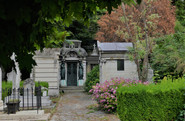













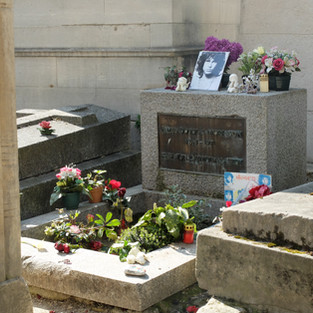




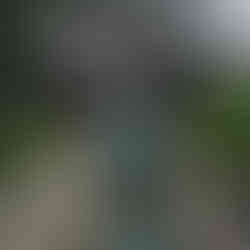








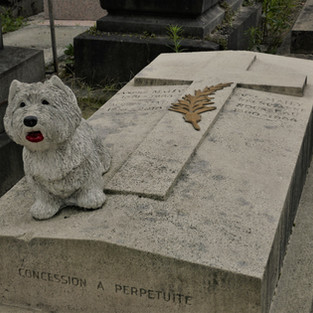

























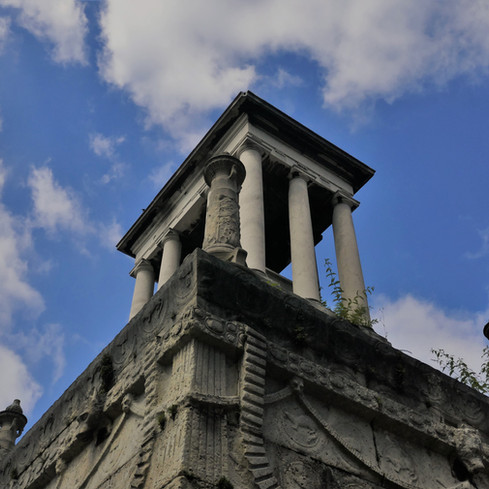

































































Commentaires